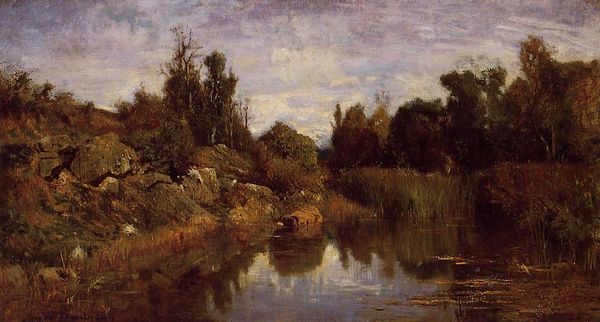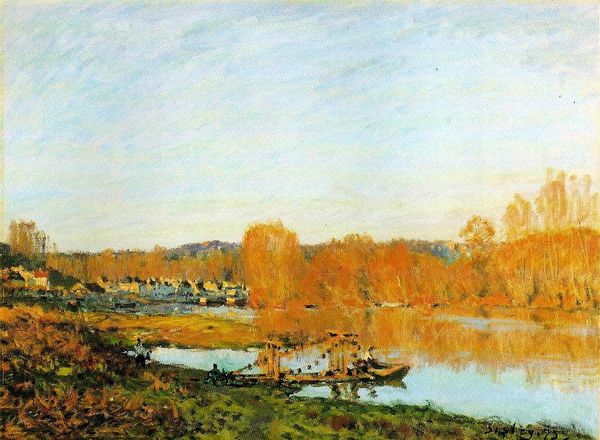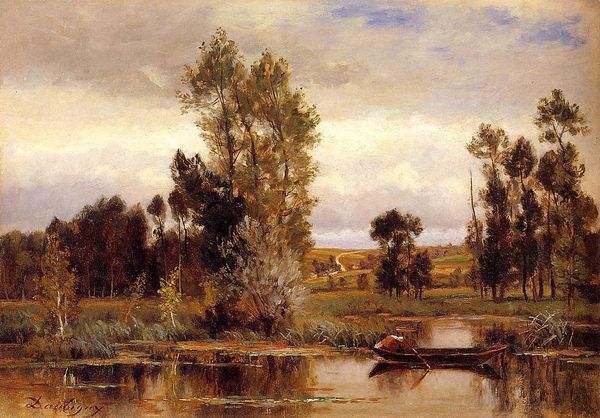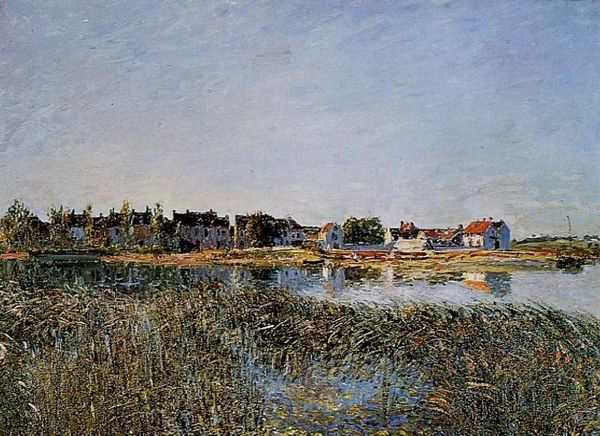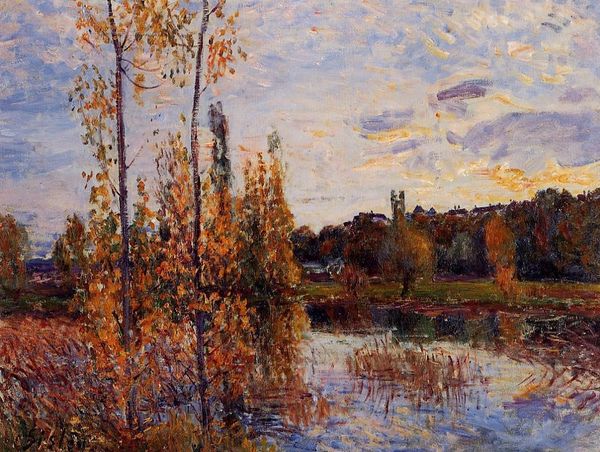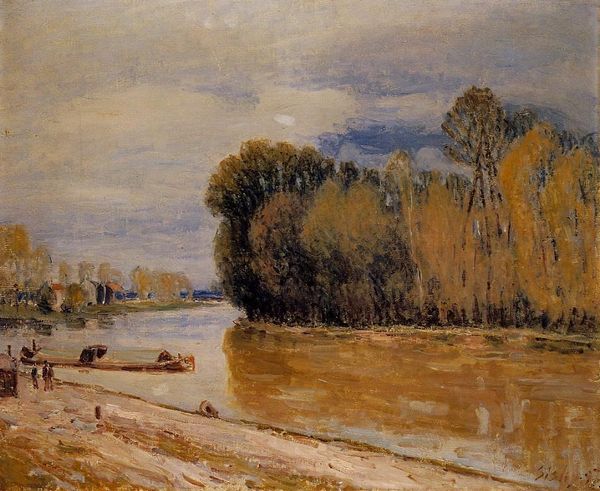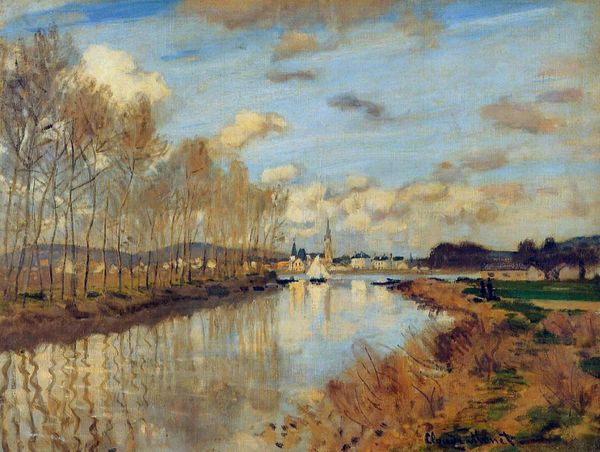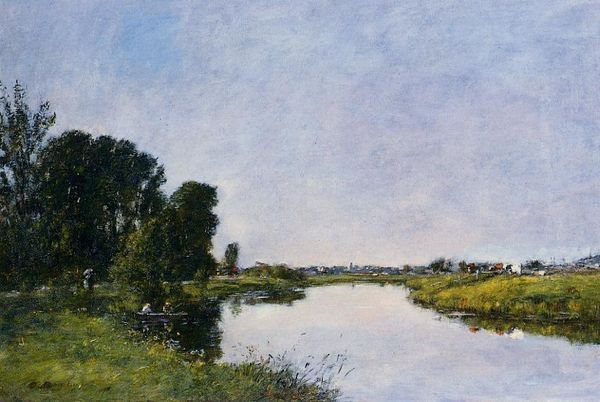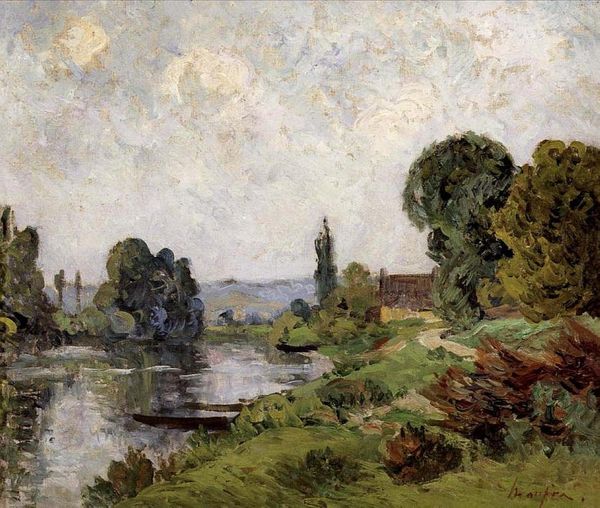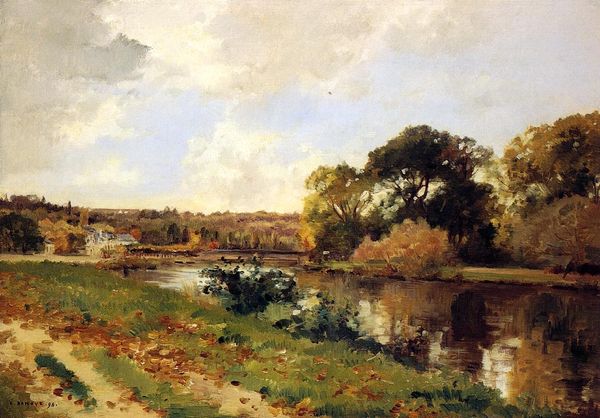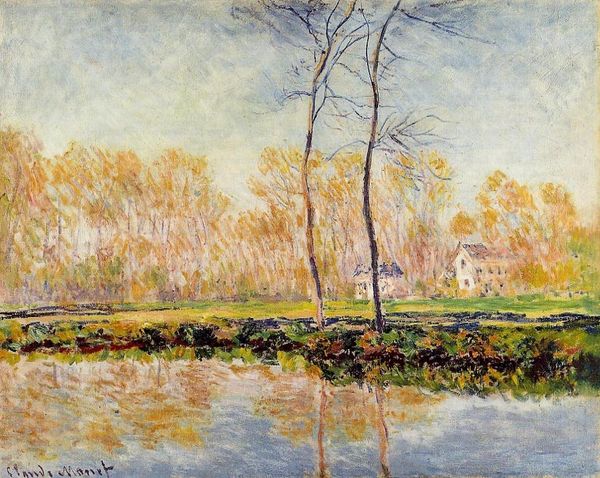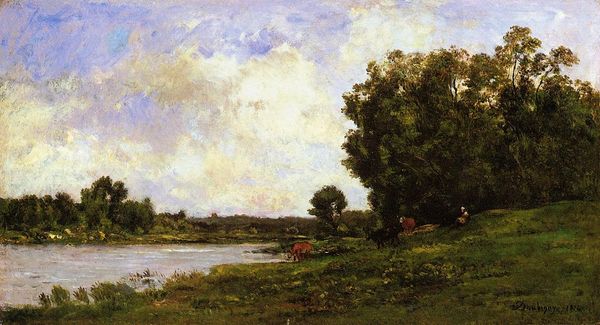
Copyright: Public domain
Editor: Here we have Eugène Boudin’s “The Still River at Deauville,” painted in 1895 using oil paint. There’s a stillness and quiet about it… almost melancholic, maybe? What do you see in this piece, considering its historical moment? Curator: It’s easy to be lulled by the apparent tranquility. But let’s consider the social context. Boudin, painting this “natural landscape” in the late 19th century, is participating in a visual tradition heavily influenced by industrialization and urbanization. The seemingly untouched scene is, in effect, a reaction to modernity. Editor: So the painting’s "naturalness" is actually constructed? Curator: Exactly. Think about the rise of the bourgeoisie and their leisure activities. Deauville itself was becoming a resort town. This image presents a specific version of rural life, one conveniently separated from the realities of labor and economic disparity. Who is invited to experience this scene, and who is excluded? Editor: That’s a great point! I was initially drawn to the painterly sky and the reflected light on the water, but I didn’t think about it as a deliberate construction of an idealized space. Curator: Boudin provides a visual escape, certainly, but let’s ask ourselves: escape for whom, and from what? By acknowledging that the image's tranquility obscures the socio-economic shifts of the time, we can engage with it critically and move beyond a purely aesthetic appreciation. Editor: I see it now – this idyllic image speaks volumes about what it chooses *not* to show. Thanks, that's really changed my perspective. Curator: Absolutely! Art, even in its quietest forms, is always in conversation with its time. Always ask whose narrative is being represented, and whose is being erased.
Comments
No comments
Be the first to comment and join the conversation on the ultimate creative platform.
